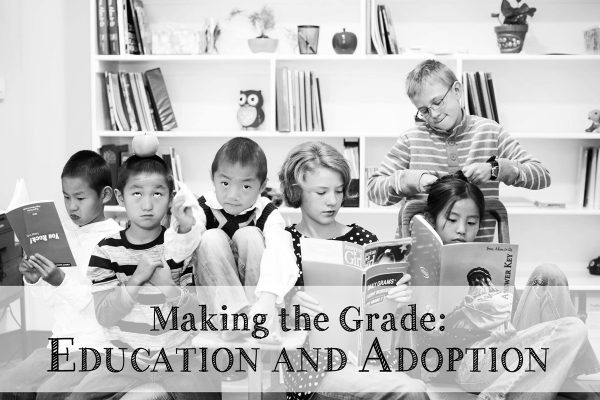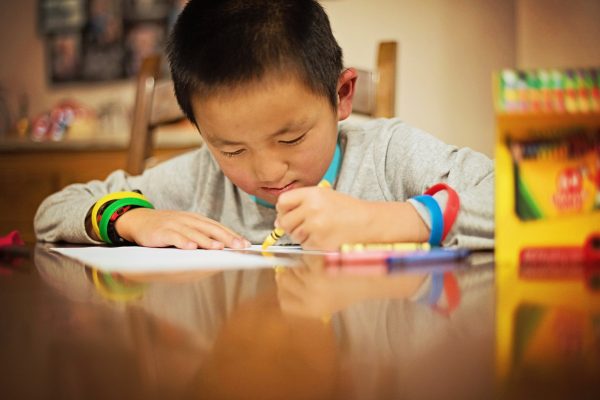
So you want to homeschool your recently adopted child, but the thought intimidates you?
You can do it! And here are ten ideas to help you get started.
10. Research the laws in your state.
Homeschooling is legal in every state, but each one has their own requirements. Some are very minimal such as merely keeping attendance records, while other states require registering at the beginning and testing at the end of each school year. But don’t let the requirements scare you off. My state is one of the registering/testing states, and there is the option to instead have a teacher annually review a portfolio of the student’s work to confirm they are making progress. You are likely to find an option for your state that will allow your atypical learner to homeschool.
You will need also to know how many instructional hours or days of attendance are required and what subjects must be taught. Homeschool Legal Defense Association is an expert on these laws. You can check them out here.
9. Get connected.
Your state homeschooling association probably has an annual conference which not only provides you with encouragement and training, but has a vendor hall where you can get an up close look at curriculum before you buy. Local groups are great for support, small group educational activities, recreation and social opportunities. You can find your state and many city support groups listed here.
8. Join an online support group.
If you had a DTC or travel group as you were waiting for your child, you know how valuable they were for sharing information and venting when you have “one of those days”. Two of the groups I follow are Homeschooling Your Child Adopted From China and Adoptive Homeschooling Families.
7. Set primary goals for your child’s school year.
These are things that aren’t necessarily academic in nature, but are of utmost importance. For example, the primary goals for my six-year-old who came home this summer include bonding solidly, learning that she is part of a family and what that means, acquiring understanding of the English language, and dealing with sensory processing disorders. Each child is an individual, so your goals may not be the same.
In the homeschool classroom we can choose what really fits the individual child. Last week the mailman brought math and science books for my high school student, and a water table for my six-year-old. Yes. This was actually listed as part of her intended curriculum on the papers sent to our school district. I think she approves. Sensory deprivation, we’re out to destroy you.

6. Using the guidelines of your state set academic goals for the school year.
Make sure these are realistic goals, but don’t be afraid to change them a bit as the year progresses and your child’s needs change. They will vary greatly depending on the age and capabilities of your child. My youngest daughter will spend a lot of this first year in therapy and medical settings so I will remind myself over and over to default to those goals I counted as the most important (see #7) and count it as a win as she acclimates to our family and has a wide variety of sensory experiences.
5. Choose your curriculum.
In some ways it was easier when I first began homeschooling and there were really only a few choices. It is wonderful to have so many curriculum choices now, but it can be overwhelming. I have a few recommendations of posts that may help to sort through and choose what “fits” with your family and learning style. All three articles hold the opinion (that I hold to also) to first develop your schooling philosophy. Check out She Knows, How Do You Choose a Homeschool Curriculum? and Not Consumed.
4. If you are homeschooling more than one child consider using a unit study approach.
In a unit study most of the subject areas will revolve around a common theme. This allows your children to learn together, even when they have age differences, which will make the most of your teaching hours. The older child studies deeper into the topic while the younger learns the more basic concepts. Teacher/Mama only has to prepare one lesson.
To learn more about unit studies check out What is a Unit Study? and Unit Studies and All in One Programs.
3. Don’t judge what you accomplish on any given day in your school based on what your friends are doing.
Just as your family composition doesn’t look like that of your next door neighbor, neither will your homeschool mirror another family’s experience. Each child is an individual with their own specific needs. Ideally each homeschool will be structured to best fulfill those individual needs.
Look at it this way, if you have a room with one hundred homeschool moms and ask them how to best conduct a homeschool, you are likely to get about ninety-five different answers! But that is the beauty of homeschooling. You as the mom know your children better than anyone else. You get to make the choices, perhaps tweaking them as the year progresses. Comparing yourself with others will just cause discontent.
2. Give yourself and your child lots of grace.
Keep it fun when you are able. Their educational deficits weren’t created overnight and won’t be solved that way either. Remind yourself over and over about the most important goals. (Again see #7.) Yes, education is important and we must exercise due diligence, but keep your most important things first.

1. Enjoy being the one who is right there to experience your child’s firsts!
These special learning times will be a memorable adventure for both of you. Give yourself permission to enjoy it right along with your child.
Your child’s greatest need is to feel loved and learn to function in a family setting. Bonding may take lots and lots of time. Homeschooling your adopted child is an opportunity for quality and quantity time as they adjust to their new life.
If you have the heart to homeschool, you can do it. I’m wishing you a successful and enjoyable school year!
Disclaimer: It is not the purpose of this article to convince you to homeschool. If you send your child to a public, charter or private school I am positive you have good and valid reasons. Please do not take what is meant to be an encouragement to those who have made the decision to homeschool as a hint that you aren’t “doing it right.” No judgement is intended or implied.
– images by Emily Adcox

Randi is mom to thirteen (five of whom are from China) and grandma to eleven. She has homeschooled since her oldest began kindergarten in 1987. The six children who still live at home are aged six through fourteen; and five of them use a group unit study approach.
You can see some of their adventures on her blog Raising the Royalty under the FIAR (Five in a Row) tab.

























I am in the adoption process, have not even finished dossier yet, but this is something I have given lots of thought to. I already homeschool my 3 biological children so it is just natural that we will homeschool! This article just blessed me this morning and made me realize how blessed I will be to get to see all of the firsts for our child! Thinking of starting over with homeschooling again…mine are 3rd, 5th, 8th….and will be even older once we adopt…has given me some worries, but I know the blessings will far out weigh the burdens. Thanks for this article!
Such encouragement…we have homeschooled all of our children including the 9 that were adopted and it has been such a valuable thing for our family….if someone is really struggling….we focus on them and don’t push the academics….love that you reminded people of sensory issues too….we have worked hard with those through our Himegrown Preschooler program and even our older adopted kids have done the tasks with the younger ones and have loved it. They have all made so much progress!